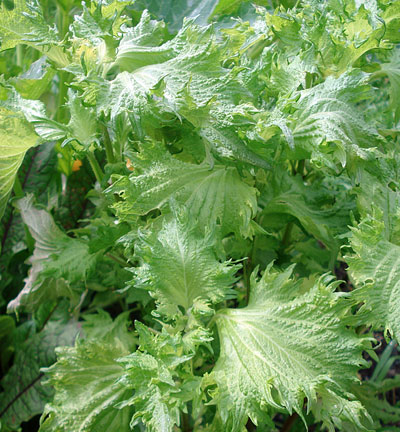
I don't know where the days are going. It's already February 15th, and time to decide which vegetable and herb seeds to get for spring. (For me, flowers come in a distinct second after edible gardening.) This weekend I'm going to try to be a bit more organized than most years and sort through the seeds I've kept from last year, and figure out what I need to order.
If you are a gardener, even if your garden is limited to some pots on a sunny windowsill, if there's one herb you should try to grow it's shiso. Shiso, or perilla to give its botanical name, is a very refreshing herb that can be used in all manner of ways. For bentos though one interesting aspect of shiso is that it has some antibacterial qualities. That's one reason why you see green shiso leaves being used as a garnish with sashimi. You can use the fully grown leaves as edible dividers, to wrap rice or meat or other things, and a lot more. See this bento from last summer where I used salted shiso leaves as onigiri wrappers. I love shiso-wrapped onigiri, they taste so fresh! I think that shiso is used quite a lot in the winning Hello Kitty bento too (for the head wrapper and the paws).